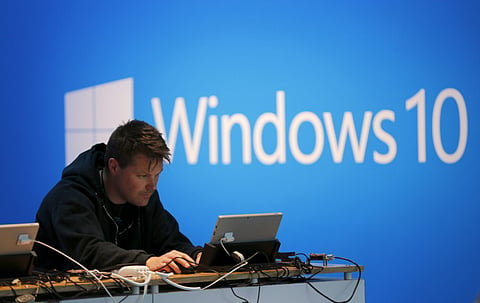Windows 10: More Microsoft apps coming to Android and iPhone
Microsoft's strategy is shifting from Windows Phone to Windows 10 everywhere

After cutting 7,800 staff and taking a $7.6 billion loss on its Windows Phone division, Microsoft’s chief executive Satya Nadella intends to ramp up the company’s invasion of iPhone and Android with its apps and services.
While the write-down has been seen as effectively neutering the remainder of the smartphone business Microsoft bought from Nokia in 2012, Nadella insists that his company is not exiting the smartphone market.
“I just don’t want to build another phone, a copycat phone operating system, even. I want to be able to be present on every mobile endpoint,” Nadella told technology site ZDnet.
“That’s a very explicit core goal. It’s not (just) the notion of having our application endpoints, Skype, Outlook, Wunderlist, Sunrise, on every one of the two billion devices.”
Microsoft has around 60 apps and games available for Apple’s iOS devices, and more than 10 apps for Android including OneDrive, OneNote, Office, Outlook and Xbox Smartglass.
The company has recently been making deals with Android smartphone and tablet manufacturers including Samsung, Sony and HTC to preinstall a small army of its apps on big-name devices.
‘There will be Lumia devices’
Very few big-name manufacturers have adopted Windows Phone. Nokia was the primary handset partner until Microsoft bought it, although a few smaller Chinese manufacturers have shown interest.
But many have speculated that Windows Phone would die without Microsoft making phones as it was responsible for 95 per cent of Windows smartphones in the last couple of years.
While Microsoft wants to provide software for others to make devices, Nadella said categorically that, “if no [manufacturer] stands up to build Windows devices we’ll build them. There will be Lumia devices.”
The Microsoft head said that if that was the case it would take the form of a Surface-like smartphone - one or two smartphones made as indicators of what can be done with Windows, rather than mainstream phones to compete with Apple’s iPhone and Samsung’s Galaxy S6.
Microsoft’s problem is that it has sold Windows 10 on the premise of being available on a range of devices from smartphones to desktop computers. Its “universal apps” promise to run on every Windows device; its “continuum” system aims to provide seamless switching between PCs, phones and tablets, while its Microsoft Edge browser will be as familiar to users on phones as it is on laptops.
All of those features require some form of mobile device to create a coherent experience. Nadella said that at least a few “premium” Lumia devices would be released this year, but Microsoft may have an even greater uphill battle convincing consumers to buy them now.
Guardian News & Media Ltd, 2015
Sign up for the Daily Briefing
Get the latest news and updates straight to your inbox

